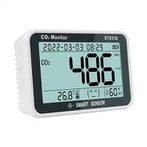Two questions you should pay attention to when buying a metallographic microscope
1. In the above, we introduced the requirements that metallographic microscope imaging should meet. Here, we would like to remind you that the core component of metallographic microscope is the optical imaging system, which is divided into four parts of metallographic microscope. Metallographic microscope uses optical imaging principles to obtain images of metal microstructures (i.e. metallographic patterns), and then conducts qualitative and quantitative analysis of the metallographic patterns. The quality of imaging is the primary indicator for measuring the quality of metallographic microscopes. To obtain clear images, four basic conditions must be met: high contrast, high brightness, good color reproduction, and high resolution. The first three conditions are easily overlooked by users when choosing, and users should not blindly pursue resolution while neglecting the other three aspects. Only in this way can they achieve value for money and make the best use of resources.
2. When using a metallographic microscope, the continuous stability effect of the microscope should be considered. In long-term use, metallographic microscopes are generally used for comparison purposes, such as in scientific research work, which requires us to maintain good working conditions during the use of metallographic microscopes. The normal working life of metallographic microscopes can reach 30 years. During such a long service life, the quality of metallographic microscopes is particularly important. Whether it is production materials or precision assurance, metallographic microscopes should maintain such effects.
These are the two issues we should pay attention to when purchasing a metallographic microscope. It is also important to note that whether choosing to use a metallographic microscope or purchasing other types of microscopes, we should comply with these purchasing requirements.






